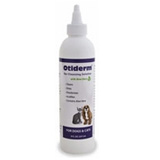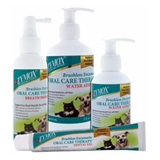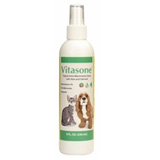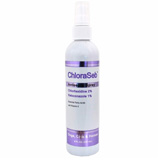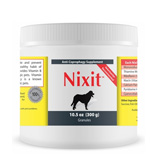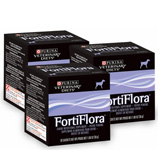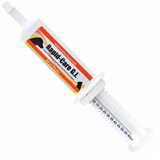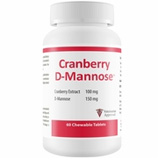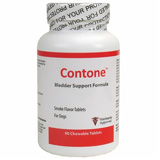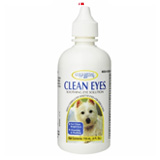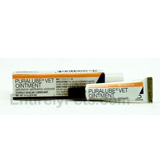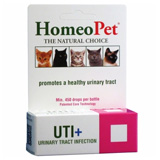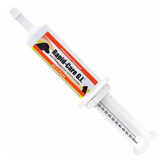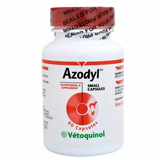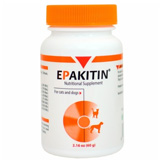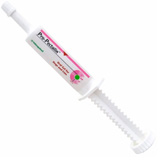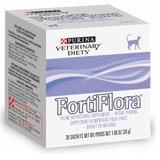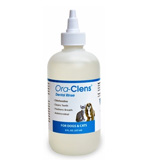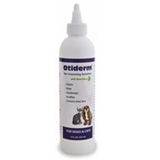Most Common Pet Health Problems
Top 10 Health Problems in Dogs:
Ear Infection
You can recognize an ear infection by
your dogís behavior- frequent head shaking, awkward posture, and other indications of dizziness warrant an examination of your petís ears. Infected ears will exhibit malodor and redness.
Additional Resource: Proper Ear Care for Your Pet
Skin Allergy
Did you know that one in seven dogs suffers
from some form of allergy? Skin allergies
are a common reason pet owners seek
veterinarian care. There are a variety of
topical creams, sprays, treats,
and shampoos that prevent allergic reactions.
Additional Resource: Pet Allergy Guide
Skin Infection/Hot Spot
Hot spots and skin infections can be very
painful for dogs. Most hot spots enlarge rapidly, warranting swift treatment. Proper grooming can help prevent the formation of these painful sores, but discouraging the excessive scratching responsible for most hot spots is also essential.
Additional Resource: Hot Spots
Vomiting
Like humans, dogs have a vomiting mechanism that rejects inedible substances. However, owners must be aware that vomiting can be a symptom of a serious illness and can lead to serious complications when persistent. Puppies and older dogs are at a higher risk of dehydrating themselves and need special attention when encountering this problem.
Diarrhea
Whether itís an infection or a change in
diet that's causing your petís diarrhea, the danger of dehydration is a serious one. Owners must ensure that their dogís diet isnít responsible for the problem. If the problem is ongoing, it's important to seek attention from your veterinarian.
Additional Resource: Pet Diarrhea
Bladder Infection
Bladder infections are often preceded by long periods of time in which a dog does not eliminate. Urethral infections and diabetes mellitus can both increase the likelihood of infection. If you discover that your dogís urine color is abnormal,
it may be indicative of a bladder infection.
Arthritis
There are many treatments available to
prevent joint problems in dogs. Some joint problems are incurable, so it's important to be proactive in your care to prevent these problems with an appropriate diet and low-impact exercise.
Additional Resource: All-Time Best Joint & Arthritis
Soft-Tissue Trauma
Dogs that have been injured should
always be taken to a vet as a precaution, even if your dog does not exhibit signs of pain. A soft tissue injury can go unnoticed at first- but it can become more problematic if left untreated.
 | 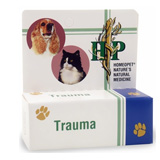 |
| Nutri-Vet K-9 Aspirin for Large Dogs | HomeoPet Trauma (15mL) |
Noncancerous Tumor
Tumors should be taken seriously and
all potential tumors should be examined by a veterinarian. Skin tumors don't have a uniform appearance and only a trained vet can decipher them. Genetics play a big role, too, and certain breeds are more prone to develop them- so talk to your veterinarian for more specific counsel.
Eye Infection
If you notice that your dog's eyes are red and watering frequently then itís likely that he is suffering from an eye infection. Eye infections cause pain and discomfort in dogs that can be relieved with proper treatment. Take your dog to the vet if you think he
may be suffering from this condition.
Top 10 Health Problems in Cats:
Lower Urinary Tract Problems
Urinary tract problems in cats can be fatal if the urethra becomes blocked; therefore, itís important to identify urinary tract infections and other problems early so that they can be treated or prevented before seriously
harming your cat.
Vomiting
Vomiting in cats usually occurs when the cat has swallowed something that irritates the stomach. Other contributing factors include eating rapidly or in excess and certain illnesses. Itís important to make sure sick cats stay hydrated, as persistent vomiting results in a large loss of bodily fluids.
Additional Resource: Toxic Food & Substance Guide
Chronic Renal Failure
Chronic renal failure in cats can be
caused by a bladder infection that develops into kidney disease. This type of infection is usually bacterial in nature and causes bloody elimination, vomiting, and loss of appetite. It's important to treat quickly, as it can pose a risk to your catís life.
Additional Resource: Chronic Renal Failure
Hyperthyroidism
This glandular disorder is most frequently caused by a hormonal imbalance in the bloodstream. It can cause weight loss in spite of increased appetence, hyperactivity, and increased urination. Other symptoms include increased shedding and panting. Older cats are at a greater risk and exposure to cigarette smoke can be a contributing factor.
Diabetes Mellitus
Diabetes mellitus develops because of
a lack of insulin production. Cats suffering from excessive thirst, vomiting, decreased appetence, dehydration, abnormal breathing, and weight loss may be diabetic. If your cat exhibits these symptoms, visit a veterinarian for further counsel.
Additional Resource: Feline Diabetes
Diarrhea
Often a change in diet can cause a cat
to have diarrhea. If diarrhea is persistent,
a veterinarian should be called and the cat
should be examined more closely, as it can
be a symptom of a more serious condition.
Diarrhea can also cause dehydration.
Additional Resource: Feline Diarrhea
Skin Allergy
Allergies affect a cat's immune
system by causing hypersensitivity
to substances in their environment.
Coughing and sneezing are two of the most frequent symptoms of an allergic reaction. There are many treatments available to combat these and other symptoms.
Dental Disease
Diet is a major contributing factor to dental disease in cats. Domestic cats no longer keep up the practice of eating hair and feathers, believed to be a mechanism for dental care prior to domestication. As such, itís important to provide proper dental care for your cat to prevent dental disease.
Additional Resource: Feline Dental Disease
Ear Infection
Most ear infections are caused by ear mites-
but other cases require a unique
treatment. Talk to your veterinarian if
your cat exhibits black or yellow
discharge from the ear, red and swollen
ear flaps or canals, waxy buildup, strong
odor, loss of balance, and hearing loss.
Eye Infection
Eye infections are extremely common in
cats and can be symptomatic of more
serious conditions, including feline leukemia,
FIV, toxoplasmosis, and roundworm
infestations. You can identify infections by inflammation of the inner eye, redness in
the eyes, yellow discharge, and protruding eyelids.

